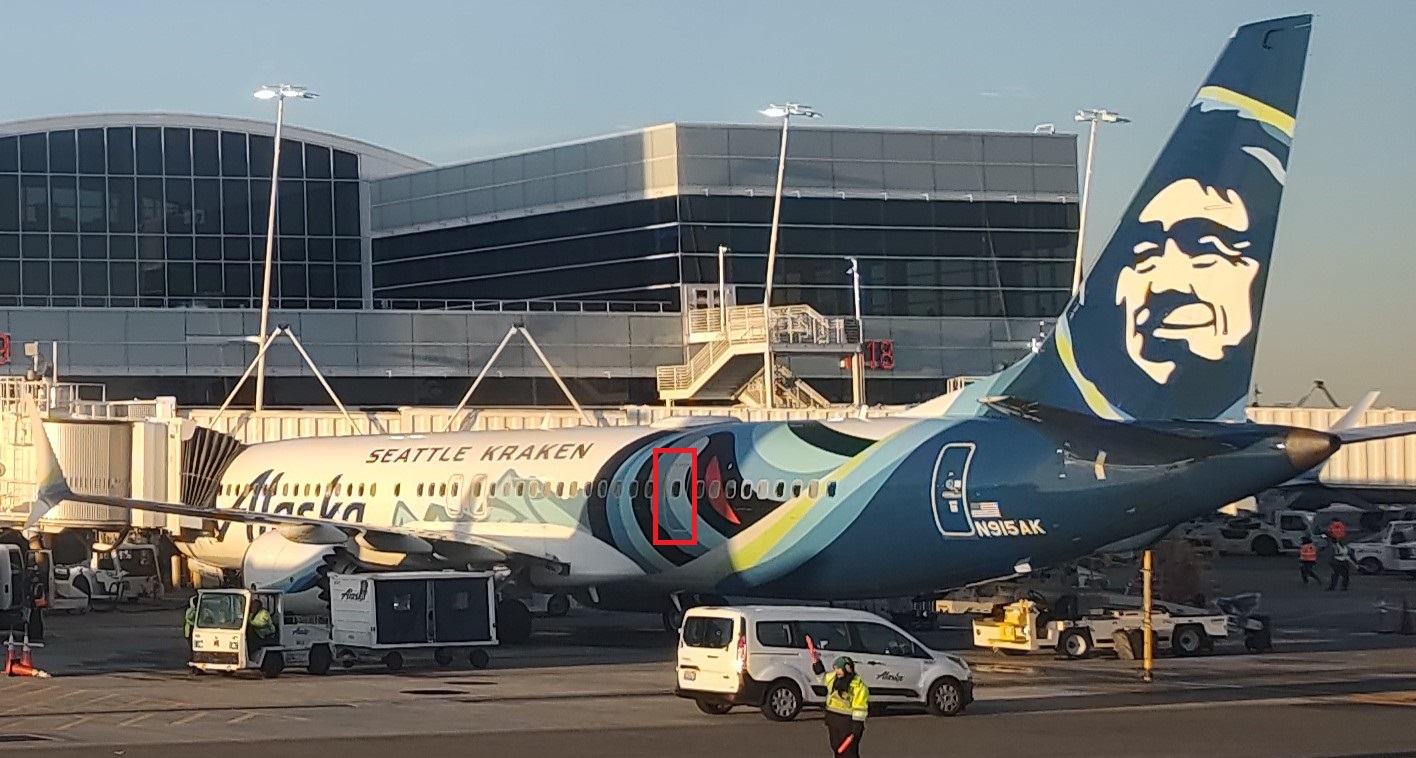Alaska Airlines grounds Boeing 737-9 MAX fleet due to failure of a factory-overridden door
Following the explosive decompression incident involving an Alaska Airlines Boeing 737 MAX, the company decided to temporarily suspend operations with the -9 variant until necessary reviews are completed to ensure operational safety.
«[After what happened with flight 1282] we have decided to take the precautionary measure of temporarily grounding our fleet of 65 Boeing 737-9 airplanes. Each aircraft will return to service only after all maintenance and safety inspections have been completed. We expect all inspections to be completed in the coming days,» the airline said in a statement, quoting CEO Ben Minicucci.
«We are working with Boeing and regulatory agencies to understand what happened tonight, and will share updated information as more data becomes available. The NTSB is investigating this event, and we will fully support their investigation,» he added.
Alaska Airlines had received its first Boeing 737-8 (the standard variant of the 737 MAX family) yesterday, which would not be affected by the measure, as it lacks the deactivated door that failed on flight 1282.
Possible History of Failures
According to a report by The Air Current, the airline had withdrawn the involved aircraft from oceanic operations after repeated pressurization alarms were triggered.
TAC cites sources close to Alaska’s operations, who indicated that on January 4 the aircraft triggered a pressurization alarm after landing and that the same alarm repeated on a subsequent flight. This initial alarm prompted the aircraft to be removed from ETOPS range operations, following the company’s regular maintenance procedures.
The Involved Door is Factory-Deactivated and Inaccessible from the Inside
A key detail is that the door affected in the explosive decompression is not enabled on Alaska’s 737-9s by operator request. Thus, the aircraft can carry 178 passengers in three classes (16 in first, 24 in premium economy, and 138 in economy), against the maximum capacity of 220 passengers the aircraft would have if the deactivated doors were available.
In the comparison of the seat map of Alaska versus a Lion Air Boeing 737-9, it is clear that there are a pair of emergency exits between rows 31 and 32 (of a total of 39 rows in a single class), which are not shown in the interior of Alaska’s -9.


The emergency door deactivated directly by Boeing is completely inaccessible from inside the aircraft, as in the cabin the side panels turn it into another window, but it can be seen from outside the aircraft.


This revelation once again brings Boeing into question, as manipulation of the rear aft door is impossible for the operator to perform.

/https://aviacionlinecdn.eleco.com.ar/media/2024/01/IMG_20230130_081404701-edit.jpg)
Para comentar, debés estar registradoPor favor, iniciá sesión